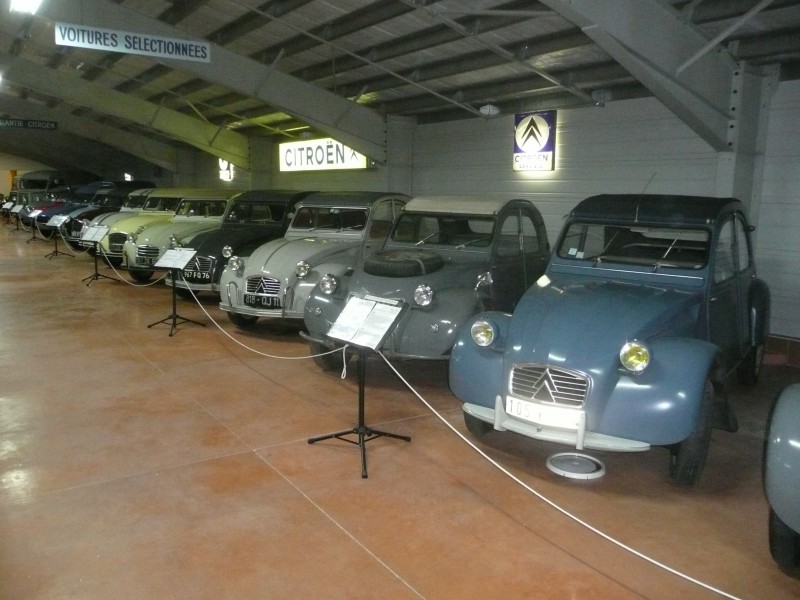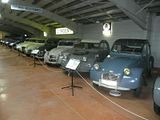
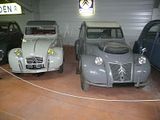
I first came across this remarkable museum by pure chance about 6 years ago. Enjoying a drive on the famous Route Napoleon, in the mountains up above the Mediterranean coast, as I came into the small town of Castellane, I spotted a sign referring to a Citroen Museum, just to the north of the town. Intrigued, I followed the signs and came across a large barn like building and an open door. Someone arrived after a couple of minutes, relieved me of a few Euros and I spent a good hour or so gazing at an incredible array of Citroen models, all seemingly in perfect condition, This was a place to which I had to return, with camera, for another look, and on my recent sojourn in the Nice area, I was able to make another visit. Clearly a little more established now, the museum is open not just on Sunday afternoons in the summer months, but every day from mid April to mid October, and when you arrive there is a proper entrance area, with ticket desk and souvenir shop. The collection is the passion of one man, Henri Fradent, and contains a vast array of cars that he has sought out and purchased over a 25 year period. His criteria are for low mileage and original cars, and with the exception of one of the two DS Cabrios, none of the cars have been restored. An information placard details the history of each specific car and in many cases the manner by which the patron came to acquire the car. The collection numbers over 90 cars, and is still growing. Not all of the 90 are on show, but there were plenty of superbly presented models to make the late afternoon trip to Castellane particularly worthwhile.
TRACTION AVANT
Although I recalled there being several of the long running Traction Avant car on show when I visited a few years ago, this time there were only a couple on display, including this 1953 Type 11B “Normale” and a 1938 Type 7C.
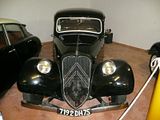
 H VAN
H VANI was quite surprised to learn that the H Van was produced until the very end of 1981, and this particular HY example was not registered until 1982, making it one of the last of the line.
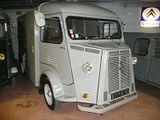 There was also a much earlier model, an HZ Van, dating from 1949.
There was also a much earlier model, an HZ Van, dating from 1949.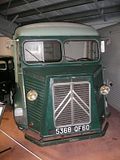 2CV
2CVAlmost the entire length of the museum comprises an array of 2CVs, ranging from an early 1954 car which has covered less than 7500 km, through to some of the late model limited edition cars including the Charleston and the France3
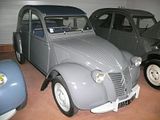
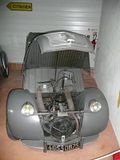
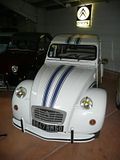
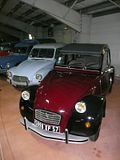
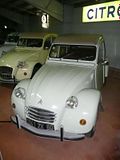
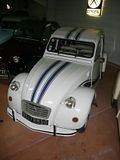
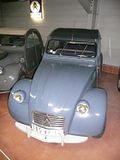
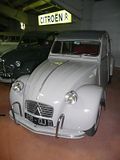
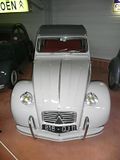
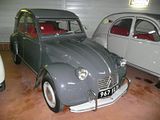
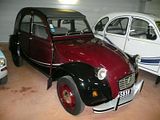
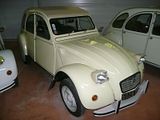

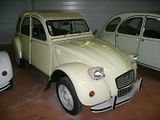 There were a number of the Van models on show, too.
There were a number of the Van models on show, too.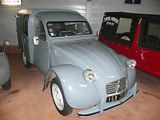


 One of the rarest models here is the Sahara, a novel twin engined car. Just 694 of these cars were built between 1960 and 1966. Although it looks much like a regular 2CV, it has many unique parts. Key innovation was the use of the two 425cc engines and two four speed gearboxes, one at each end of the car. Power output was rated as a 5CV, at 27 bhp. The spare wheel is mounted on the bonnet. There are twin fuel tanks, under the front seats, filled through a pipe cut in the doors. This particular car was made in 1962 and is car number 429 of production. It was ordered by the Norwegian Telephone Company along with a sister car, and has spent most of its life in Norway. Henri Fradent tried to buy it many years ago, but at the time the owners did not want to sell. He finally got it in 2010, and after 39 years of inactivity, has finally got it running again.
One of the rarest models here is the Sahara, a novel twin engined car. Just 694 of these cars were built between 1960 and 1966. Although it looks much like a regular 2CV, it has many unique parts. Key innovation was the use of the two 425cc engines and two four speed gearboxes, one at each end of the car. Power output was rated as a 5CV, at 27 bhp. The spare wheel is mounted on the bonnet. There are twin fuel tanks, under the front seats, filled through a pipe cut in the doors. This particular car was made in 1962 and is car number 429 of production. It was ordered by the Norwegian Telephone Company along with a sister car, and has spent most of its life in Norway. Henri Fradent tried to buy it many years ago, but at the time the owners did not want to sell. He finally got it in 2010, and after 39 years of inactivity, has finally got it running again.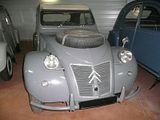
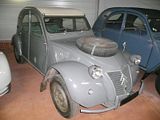
 DYANE
DYANEPosher brother to the 2CV was the Dyane, available in five door hatchback and the Acadiane van. The Dyane on show was an early car, dating from 1969, lacking the third side window that was added to the model in 1970. The Acadiane van, a 1980 car has just 108km on the clock.
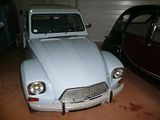

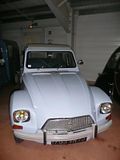


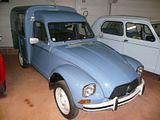 AMI
AMIFirst launched in 1961, the Ami was intended to replace the 2CV. It did not do that, and indeed the 2CV outlived the Ami, but Ami did become the best selling car in France. There were a mixture of the earlier Ami 6 cars, with their unusual reverse rear windows, as well as the later Ami 8 models, as well as an Ami Super, a sort of “Q” car with its 1015cc GS engine.
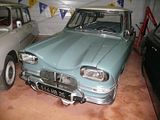
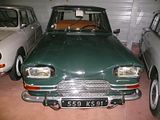
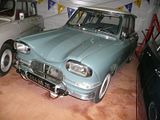
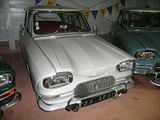
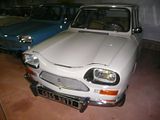


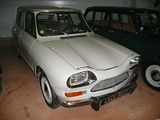
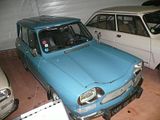
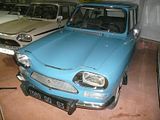
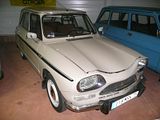


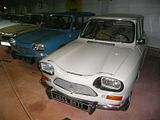 M35
M35During the late 1960s, Citroen formed a joint venture with NSU to explore the possibilities of using the rotary engine, creating a joint venture called Comotor. To get some real feedback on the viability and durability of the engine, Citroen decided to build a limited number of cars. Rather them making them commercially available, and “selling” them, they decided to create a marketing program and make the cars available only to selected “VIP” customers. To keep costs down, they decided to base the car on the Ami, but to differentiate it from regular production models, they chose to create a unique coupe style rear end, and with a more luxurious interior. The car was then built by Heuliez. Although initial plans were to build 500, only 267 were ever made, each one being visibly numbered on the front wing. The M35 Coupe was the result, and they were produced in 1970. They were expensive when new, costing more than the far larger ID19, even though this was quite a small car with a 1 litre engine, but it was smooth and had particularly impressive acceleration. The program was useful, as it allowed Citroen to get useful feedback and to continue their Rotary development program, leading to the production Birotor GS car. Because of the way in which the cars were supplied, it was quite easy for Citroen to get most of the M35s back which they did from the end of 1971, and although the cars were stored for a number of years, most eventually ended up in the crusher. It is believed that of the 50 survivors, just 14 remain in private hands. This one was bought back by a dealer in Digne, who then went bankrupt. The car was offered as part of the settlement, and spent many years idle before Henri was able to acquire it. It then took 10 years to get the car working properly.
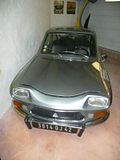 MEHARI
MEHARIBased on the mechanicals of the Ami, 144,000 Mehari were built between 1970 and 1987. The thermo-plastic body was conceived by a specialist company called SEAB. and initial manufacture of these cars was initially conducted by another specialist company, ENAC, before being brought in-house by Citroen. There is just one Mehari in the museum, and it followed a long search for an example that met M. Fradent’s requirements for a car in good condition and low mileage. This one saw service in a small village near Clermont-Ferrand, where it was the village’s fire fighting vehicle.
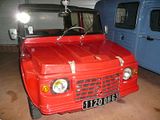
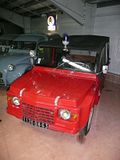
 DS
DSThis is believed to be the oldest surviving DS in the world, the 32nd model made.
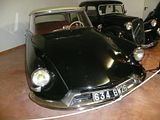
 A long line of DS, ID and D Super models down the middle of the museum illustrate some of the changes made to the car during its 20 year production life.
A long line of DS, ID and D Super models down the middle of the museum illustrate some of the changes made to the car during its 20 year production life.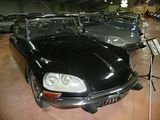
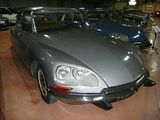
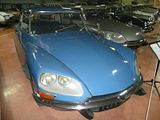
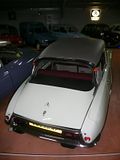
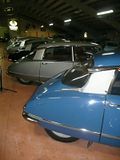
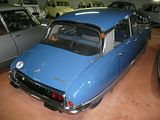
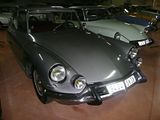
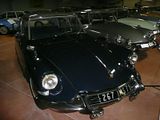
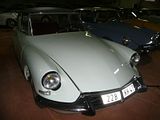
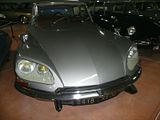
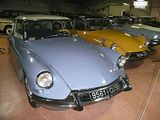
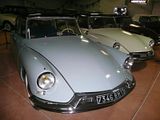
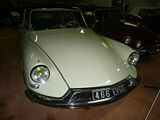
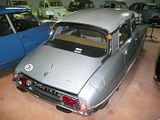
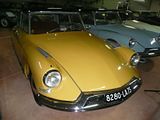
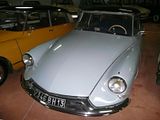

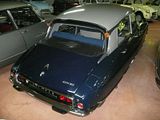
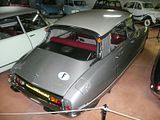


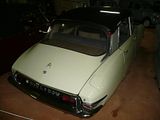
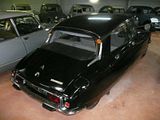
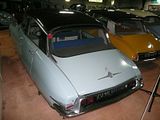
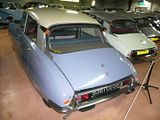
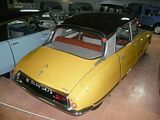 There are 2 Cabrios in the collection, and if you look closely you will see that they are different. The purple one is the very last one built by Henri Chapron in 1972. Officially, production of the “Usine” model ended in 1971. but when a customer ordered a new model directly from Chapron in March 1972, Chapron bought a regular DS21 and made one final conversion. The car features a unique and distinctive paint scheme and included every option available. It was delivered to the customer in 1973. The maroon one is a Henri Chapron DS21 dating model from 1966.
There are 2 Cabrios in the collection, and if you look closely you will see that they are different. The purple one is the very last one built by Henri Chapron in 1972. Officially, production of the “Usine” model ended in 1971. but when a customer ordered a new model directly from Chapron in March 1972, Chapron bought a regular DS21 and made one final conversion. The car features a unique and distinctive paint scheme and included every option available. It was delivered to the customer in 1973. The maroon one is a Henri Chapron DS21 dating model from 1966. 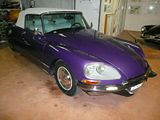
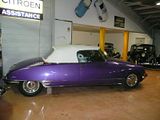
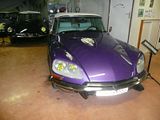
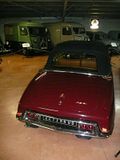
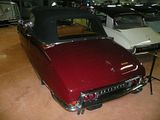

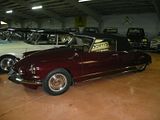 Slightly surprisingly, there is only one estate model in the collection. Dating from 1966, this is an ID19 Commerciale, the rarest of the three different model types that were sold, with only just over 500 such cars made per year.
Slightly surprisingly, there is only one estate model in the collection. Dating from 1966, this is an ID19 Commerciale, the rarest of the three different model types that were sold, with only just over 500 such cars made per year.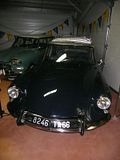
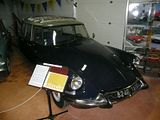
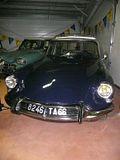 GS
GSAmong the GS cars on show are examples of the different trim versions, including the Pallas and the GS X and X2, as well as the facelifted GSA car which appeared in 1979 when the model finally received the hatchback which made access to the boot a lot easier..

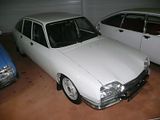
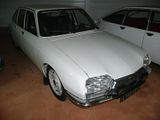
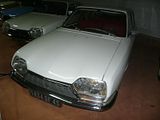
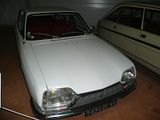

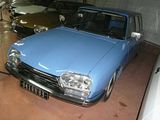
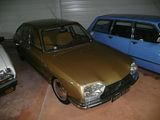
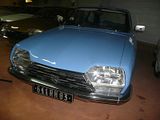
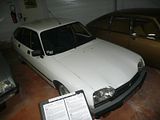
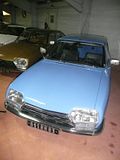
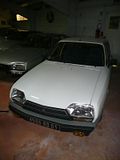
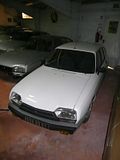
 After the experiments with the M35, Citroen persevered with the Rotary engine, and put one into the GS, creating the Birotor, a 107bhp machine, so areal “Q” car in its day. Sadly, the timing was terrible, as it was launched in late 1973, just when the Oil Crisis bit, meaning that any car with a thirsty engine, as this one was, became almost unsaleable. Only 847 cars were made, before Citroen pulled the plug. Just as with the M35, Citroen repurchased most of these cars in the late 1970s, to avoid the need to keep making spare parts for them, with just a few still surviving.
After the experiments with the M35, Citroen persevered with the Rotary engine, and put one into the GS, creating the Birotor, a 107bhp machine, so areal “Q” car in its day. Sadly, the timing was terrible, as it was launched in late 1973, just when the Oil Crisis bit, meaning that any car with a thirsty engine, as this one was, became almost unsaleable. Only 847 cars were made, before Citroen pulled the plug. Just as with the M35, Citroen repurchased most of these cars in the late 1970s, to avoid the need to keep making spare parts for them, with just a few still surviving. 
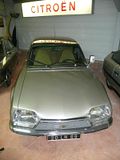
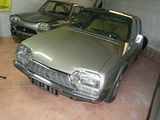 SM
SMThere are currently a pair of SM in the collection, representing the earlier carburettor and later fuel injected models.
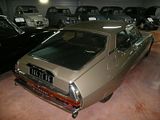
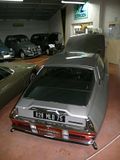
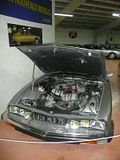
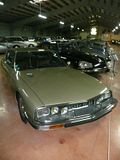
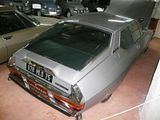 CX
CXSeen by many as the last “true” Citroen, as it was the final car developed before the Peugeot acquisition, there are a few examples of the CX in the collection, among them an early CX Pallas and one of the last cars, a CX 22 TRS, Although manufactured in 1988, it did not reach the dealer until March 1989 by which time the successor XM had gone on sale. The CX languished unsold for many years, which explains why it only has 62 km on the clock.
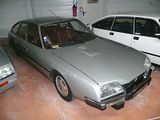
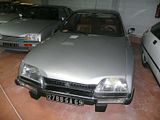
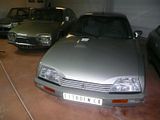
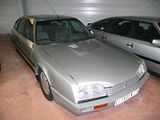 This CX 2500 GTi looks perfectly standard, but under the skin, it contains the suspension system that featured in the XM. It is one of 12 such cars, known as Regamo, that were built and put on the road in 1985 for extensive testing of the suspension system that was intended for the XM. Citroen kept 6 of the cars themselves and leased the other 6 out to selected high mileage drivers. After they had covered 30,000km most of them were converted back to regular specification and sold on. Just 2 cars are thought still exist in Regamo spec, this one and one owned by Citroen. This one survived as the dealer who acquired it from the original customer refused to send it back to Citroen, and he eventually made it available to Henri having already found the world’s oldest DS for him.
This CX 2500 GTi looks perfectly standard, but under the skin, it contains the suspension system that featured in the XM. It is one of 12 such cars, known as Regamo, that were built and put on the road in 1985 for extensive testing of the suspension system that was intended for the XM. Citroen kept 6 of the cars themselves and leased the other 6 out to selected high mileage drivers. After they had covered 30,000km most of them were converted back to regular specification and sold on. Just 2 cars are thought still exist in Regamo spec, this one and one owned by Citroen. This one survived as the dealer who acquired it from the original customer refused to send it back to Citroen, and he eventually made it available to Henri having already found the world’s oldest DS for him. 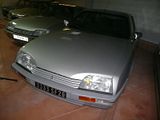 The collection continues to grow. A couple of recent acquisitions are parked up outside, and the museum’s website refers to some further vehicles held in separate storage pending an extension to the museum.
The collection continues to grow. A couple of recent acquisitions are parked up outside, and the museum’s website refers to some further vehicles held in separate storage pending an extension to the museum.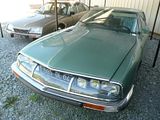
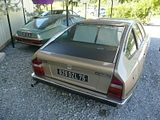 More details can be found at the museum’s own website: http://www.citromuseum.com/index.php?id=presentation&L=1
More details can be found at the museum’s own website: http://www.citromuseum.com/index.php?id=presentation&L=12012-07-20 19:13:34























































































































